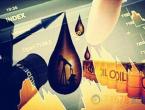EUR/USD
1.16563
-0.122%
Gold
4197.16
-0.140%
Oil
59.030
0.222%
USD/JPY
155.374
0.098%
GBP/USD
1.33310
-0.160%
GBP/JPY
207.147
-0.042%
Japanese stocks FANUC rose 12%, SoftBank Group rose 9.4%, and Renesas Electronics rose 9.3%.December 4th - Ahead of the Reserve Bank of Indias (RBI) interest rate meeting on Friday, the rupee continued to hover around the psychologically important 90 level against the dollar. DBS economist Radhika Rao stated that the RBIs strong presence in the spot, forward, and non-deliverable forward (NDF) markets has drawn a line, preventing the dollar from breaking through 89.00 against the rupee. She noted that the need to maintain the rupees competitiveness stems from the delay in the US-India trade agreement, unfavorable tariff differentials, and weak equity portfolio outflows. She concluded, "Given that the currency is in uncharted territory and macroeconomic developments are constantly evolving, there is still room for further appreciation in the dollar against the rupee."The yield on Japans 30-year government bonds fell after strong auction results, having hit a record high of 3.445% in early trading, and is now at 3.385%.ANZ: We expect any impact on Russian oil exports to be relatively short-lived. This should limit further increases in oil prices.ANZ: We expect oil prices to reach US$62 per barrel by the end of the year.











